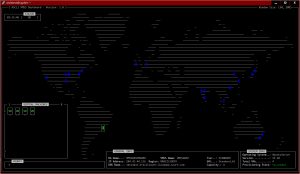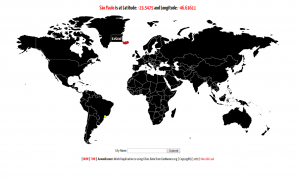Usefull commands
Sun Cluster 3.2
To show the quorum configuration:
# /usr/cluster/bin/clquorum show + Cluster Nodes === Node Name: node1 Node ID: 1 Quorum Vote Count: 1 Reservation Key: 0x469B6DA700000001 Node Name: node2 Node ID: 2 Quorum Vote Count: 1 Reservation Key: 0x469B6DA700000002 Quorum Devices === Quorum Device Name: d3 Enabled: yes Votes: 1 Global Name: /dev/did/rdsk/d3s2 Type: scsi Access Mode: scsi2 Hosts (enabled): node1, node2
And a really important is the command to know what “physical” disc is the quorum (in this case d3):
# /usr/cluster/bin/scdidadm -l d3 3 node1:/dev/rdsk/c0t5006048449AF62A7d33 /dev/did/rdsk/d3
To save, destroy, recreate, and bring all the resources online:
# /usr/cluster/bin/cluster export >scconfig.xml # /usr/cluster/bin/clresourcegroup delete --force + # /usr/cluster/bin/clresourcegroup create --input scconfig.xml + # /usr/cluster/bin/clresource create --input scconfig.xml + # /usr/cluster/bin/clresourcegroup online +
List of all tags running (as root):
# pmfadm -L tags: sometag1,sometag2,sometag3
Checking if thistag is registered and running under the process monitor:
# pmfadm -q thistag
Send the KILL signal to all processes, including the action script and its processes if they are currently executing:
pmfadm -s thistag KILL
Getting the Zpool extension from a nonshareddevice agent:
# /usr/cluster/bin/scha_resource_get -O Extension \\ -R test-nonshareddevice-rs -G test-rg Zpools STRINGARRAY MYPOOL
Getting the Thorough_Probe_interval property for the test-nonshareddevice-rs resource:
# /usr/cluster/bin/scha_resource_get -O Thorough_Probe_interval \\ -R test-nonshareddevice-rs 60
Setting the Thorough_Probe_interval to 120 seconds, for the resource test-nonshareddevice-rs:
# /usr/cluster/bin/clresource set -p Thorough_Probe_interval=120 \\ test-nonshareddevice-rs
AVS
The following command shows where is the AVS global configuration (needed in a SC environment):
# cat /etc/dscfg_cluster /dev/did/rdsk/d2s1
To recreate the AVS configuration:
# dscfgadm -d # rm /etc/dscfg_cluster && rm /etc/dscfg_local # dscfgadm
Using kstat to see the bitmap volumes configured:
# kstat -p 'sdbc:::sdbc_vol_name' sdbc:0:cd0:sdbc_vol_name dev/rdsk/c2d0s1 sdbc:1:cd1:sdbc_vol_name dev/rdsk/c3d0s1
That’s all..


